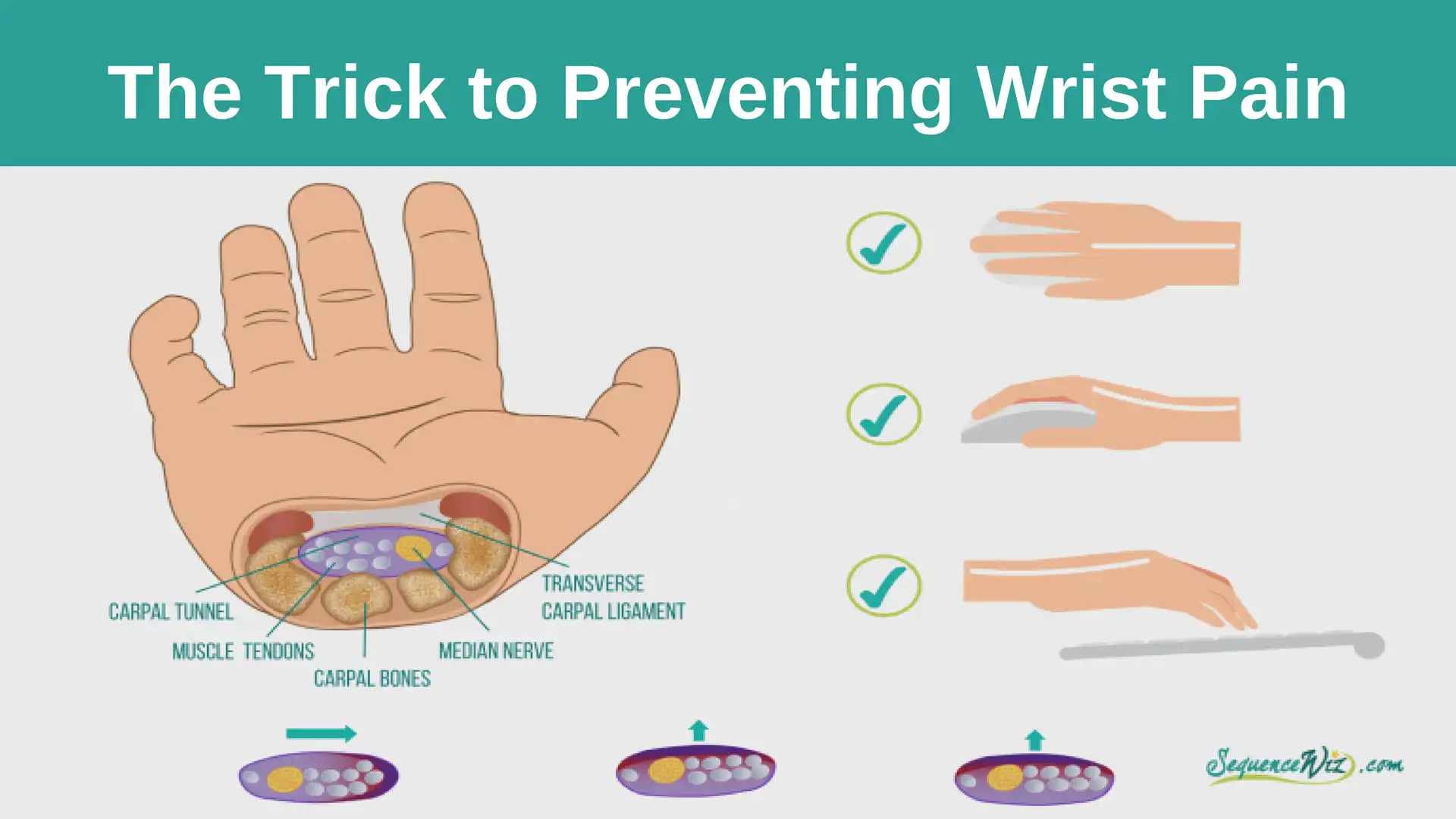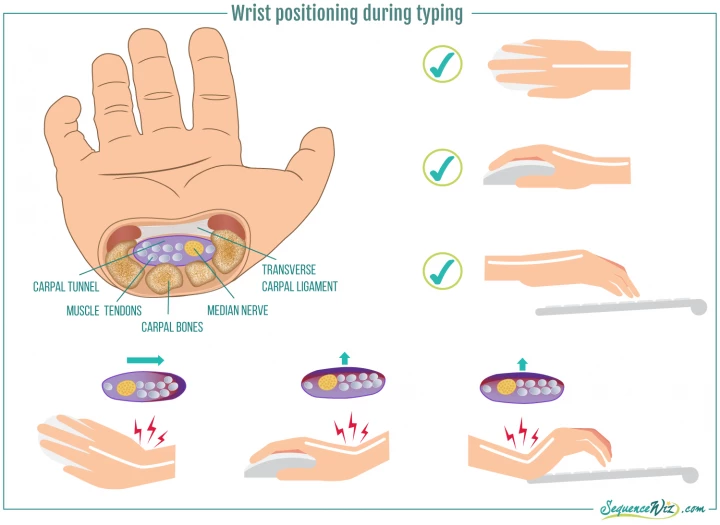The Trick to Preventing Wrist Pain: Ways to Reduce Repetitive Stress

Whenever a student of mine complains of wrist pain, the first question I ask is: “Do you type a lot?” If the answer is yes, I ask them to show me how they do it. More often than not their hand position looks like one of the images below.

Why is this a problem? Last time we discussed the “bottleneck” opening that is created in the wrist by the transverse carpal ligament (the carpal tunnel). Multiple tendons and the median nerve pass through that small opening. When you type or do other repetitive hand activity your fingers are moving, which means that the tendons slide up and down underneath the carpal ligament, creating friction. If you position your wrist on an angle while you do this repetitive activity you will likely be rubbing those tendons against one “wall” of the carpal tunnel, creating tissue irritation and also making that area thicker from constant overuse (which in turn makes the entire opening smaller). Both tissue irritation and narrowing of the opening can cause wrist pain.

That is why the first order of business when dealing with wrist pain is to analyze your repetitive hand activity and either eliminate it (if possible) or change your hand position so that your wrists remain in a neutral position when you do it.
Typing, of course, is not the only activity that can cause wrist pain. Research shows that people who work on assembly lines holding buzzing and vibrating tools are even more likely to get wrist pain then office workers. Or it can be something completely different. One of my students discovered that it was the tight handle of her office door that she strained to turn several times a day was irritating her wrist. So when you assess your hand activity don’t limit your thinking to typing.
Once the repetitive hand positioning has been addressed you can begin to follow the usual protocol of contract-relax-stretch for releasing tension in your hand and forearm muscles. They get tight and tense just like the muscles elsewhere in the body, yet we tend to focus on our hamstrings much more than we do on our hands. The easiest way to approach it is to have small movement breaks for your hands during the day, which will help prevent tension from building up. Here are some examples of hand movements that you can include in your routine:

Unfortunately, in our yoga practice we often tend to exaggerate wrist problems. If your wrists are already irritated from typing all day in a flexed position, placing them in a flexed weight-bearing position in your yoga class (in poses like Downward- Facing Dog, Plank and any sort of arm balances, for example) will only make matters worse. To give your wrists a break you can skip those poses altogether or you can bear weight on your forearms instead.

The good thing is that we can be really creative and add the simplest hand movements (above) to our yoga practice.
Study with Olga Kabel and YogaUOnline: Avoiding Yoga Injuries – Common Alignment Mistakes in Forward Bends and Twists.
Also, read...
Got Foot Pain? Try These Yoga Practices
Wrist Pain During Yoga? 4 Tricks to Eliminate Discomfort
Yoga for Neck Health: Exploring Brahma Mudra
Related courses

Educated as a school teacher, Olga Kabel has been teaching yoga for over 14 years. She completed multiple Yoga Teacher Training Programs but discovered the strongest connection to the Krishnamacharya/ T.K.V. Desikachar lineage. She had studied with Gary Kraftsow and American Viniyoga Institute (2004-2006) and received her Viniyoga Teacher diploma in July 2006, becoming an AVI-certified Yoga Therapist in April 2011. Olga is a founder and managing director of Sequence Wiz— a web-based yoga sequence builder that assists yoga teachers and yoga therapists in creating and organizing yoga practices. It also features simple, informational articles on how to sequence yoga practices for maximum effectiveness. Olga strongly believes in the healing power of this ancient discipline on every level: physical, psychological, and spiritual. She strives to make yoga practices accessible to students of any age, physical ability, and medical history, specializing in helping her students relieve muscle aches and pains, manage stress and anxiety, and develop mental focus.



